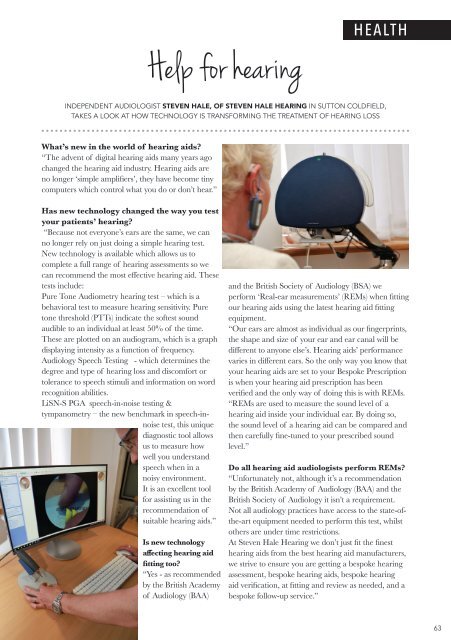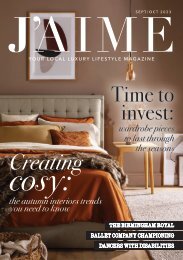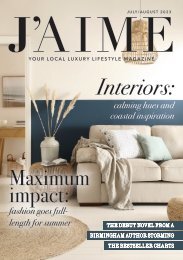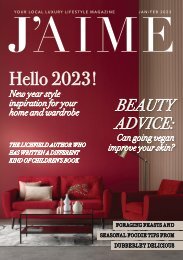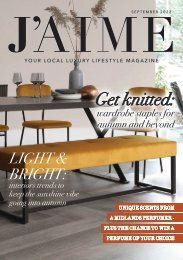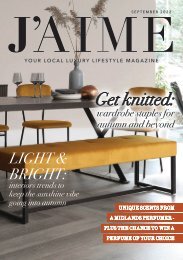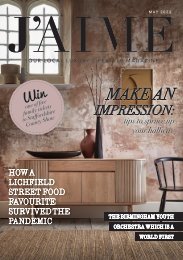Create successful ePaper yourself
Turn your PDF publications into a flip-book with our unique Google optimized e-Paper software.
H E A LT H<br />
Help for hearing<br />
INDEPENDENT AUDIOLOGIST STEVEN HALE, OF STEVEN HALE HEARING IN SUTTON COLDFIELD,<br />
TAKES A LOOK AT HOW TECHNOLOGY IS TRANSFORMING THE TREATMENT OF HEARING LOSS<br />
What’s new in the world of hearing aids?<br />
“The advent of digital hearing aids many years ago<br />
changed the hearing aid industry. Hearing aids are<br />
no longer ‘simple amplifiers’, they have become tiny<br />
computers which control what you do or don’t hear.”<br />
Has new technology changed the way you test<br />
your patients’ hearing?<br />
“Because not everyone’s ears are the same, we can<br />
no longer rely on just doing a simple hearing test.<br />
New technology is available which allows us to<br />
complete a full range of hearing assessments so we<br />
can recommend the most effective hearing aid. These<br />
tests include:<br />
Pure Tone Audiometry hearing test – which is a<br />
behavioral test to measure hearing sensitivity. Pure<br />
tone threshold (PTTs) indicate the softest sound<br />
audible to an individual at least 50% of the time.<br />
These are plotted on an audiogram, which is a graph<br />
displaying intensity as a function of frequency.<br />
Audiology Speech Testing - which determines the<br />
degree and type of hearing loss and discomfort or<br />
tolerance to speech stimuli and information on word<br />
recognition abilities.<br />
LiSN-S PGA speech-in-noise testing &<br />
tympanometry – the new benchmark in speech-innoise<br />
test, this unique<br />
diagnostic tool allows<br />
us to measure how<br />
well you understand<br />
speech when in a<br />
noisy environment.<br />
It is an excellent tool<br />
for assisting us in the<br />
recommendation of<br />
suitable hearing aids.”<br />
Is new technology<br />
affecting hearing aid<br />
fitting too?<br />
“Yes - as recommended<br />
by the British Academy<br />
of Audiology (BAA)<br />
and the British Society of Audiology (BSA) we<br />
perform ‘Real-ear measurements’ (REMs) when fitting<br />
our hearing aids using the latest hearing aid fitting<br />
equipment.<br />
“Our ears are almost as individual as our fingerprints,<br />
the shape and size of your ear and ear canal will be<br />
different to anyone else’s. Hearing aids’ performance<br />
varies in different ears. So the only way you know that<br />
your hearing aids are set to your Bespoke Prescription<br />
is when your hearing aid prescription has been<br />
verified and the only way of doing this is with REMs.<br />
“REMs are used to measure the sound level of a<br />
hearing aid inside your individual ear. By doing so,<br />
the sound level of a hearing aid can be compared and<br />
then carefully fine-tuned to your prescribed sound<br />
level.”<br />
Do all hearing aid audiologists perform REMs?<br />
“Unfortunately not, although it’s a recommendation<br />
by the British Academy of Audiology (BAA) and the<br />
British Society of Audiology it isn’t a requirement.<br />
Not all audiology practices have access to the state-ofthe-art<br />
equipment needed to perform this test, whilst<br />
others are under time restrictions.<br />
At Steven Hale Hearing we don’t just fit the finest<br />
hearing aids from the best hearing aid manufacturers,<br />
we strive to ensure you are getting a bespoke hearing<br />
assessment, bespoke hearing aids, bespoke hearing<br />
aid verification, at fitting and review as needed, and a<br />
bespoke follow-up service.”<br />
63


